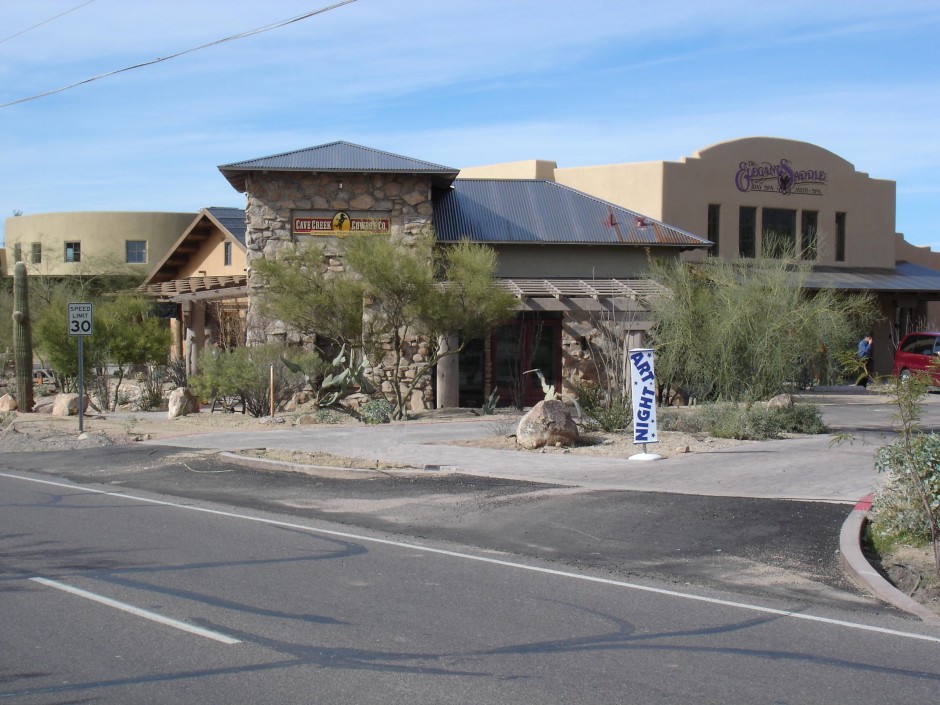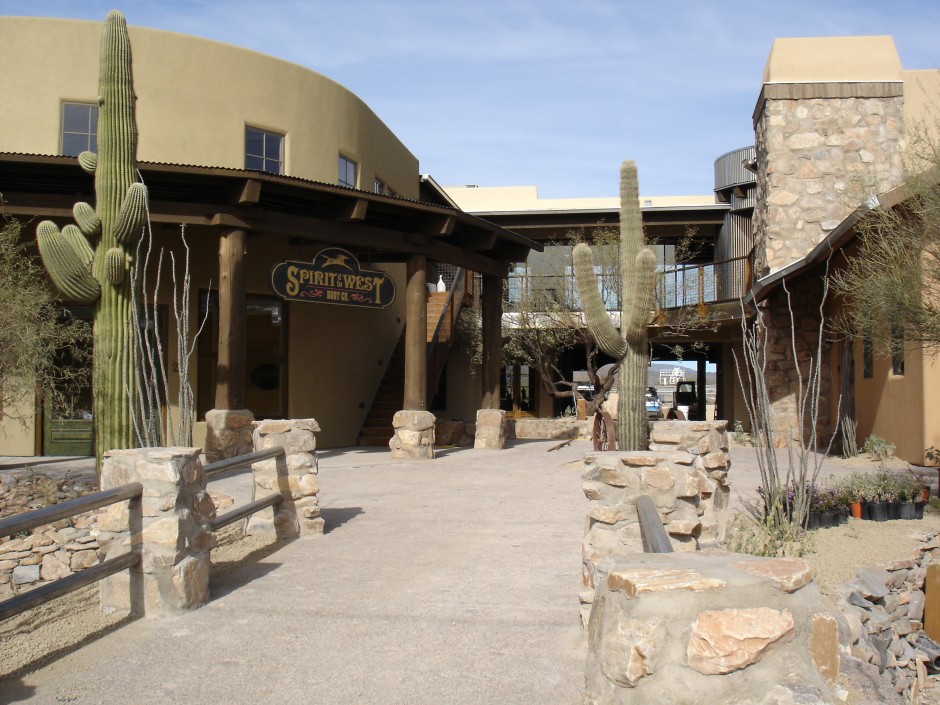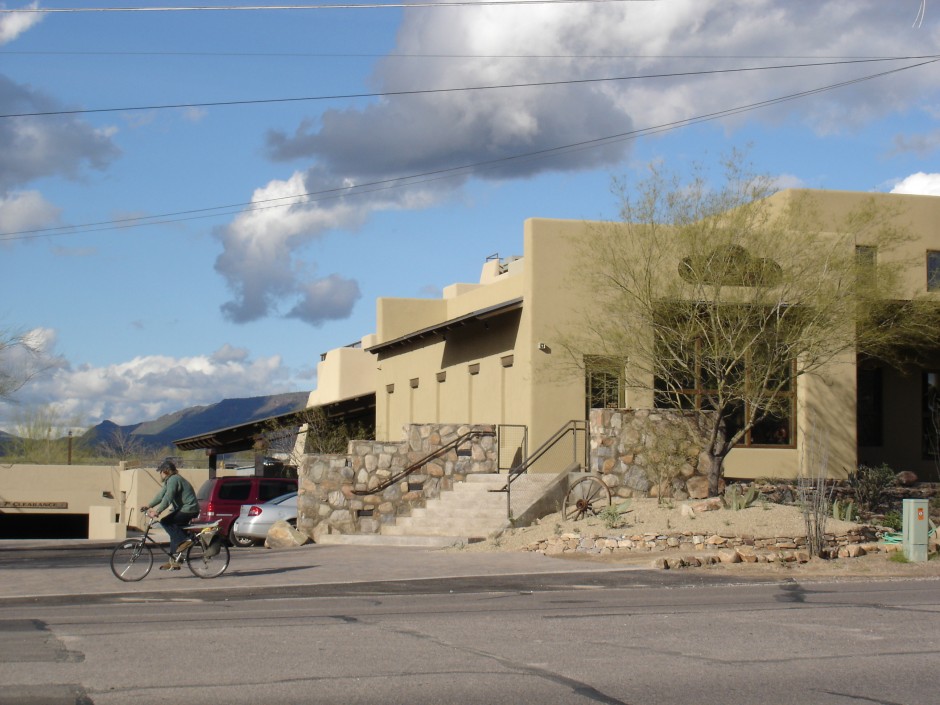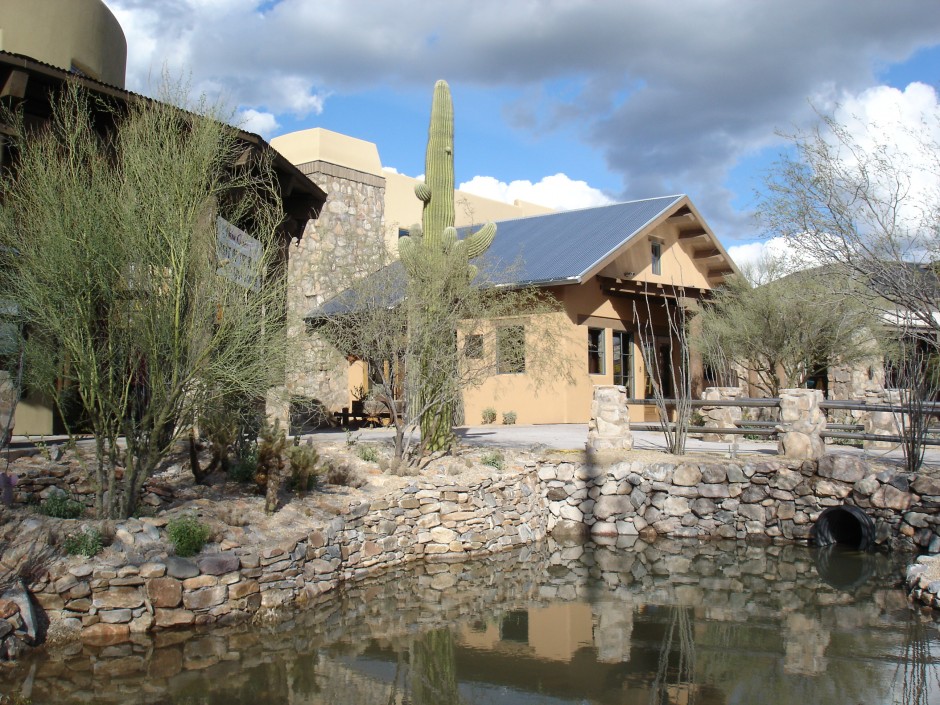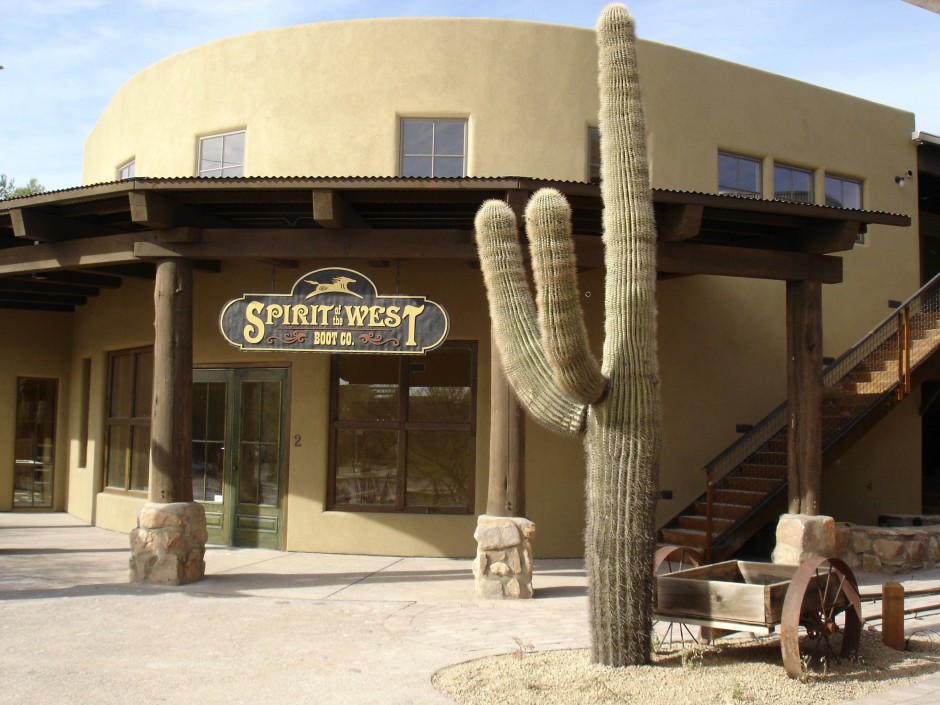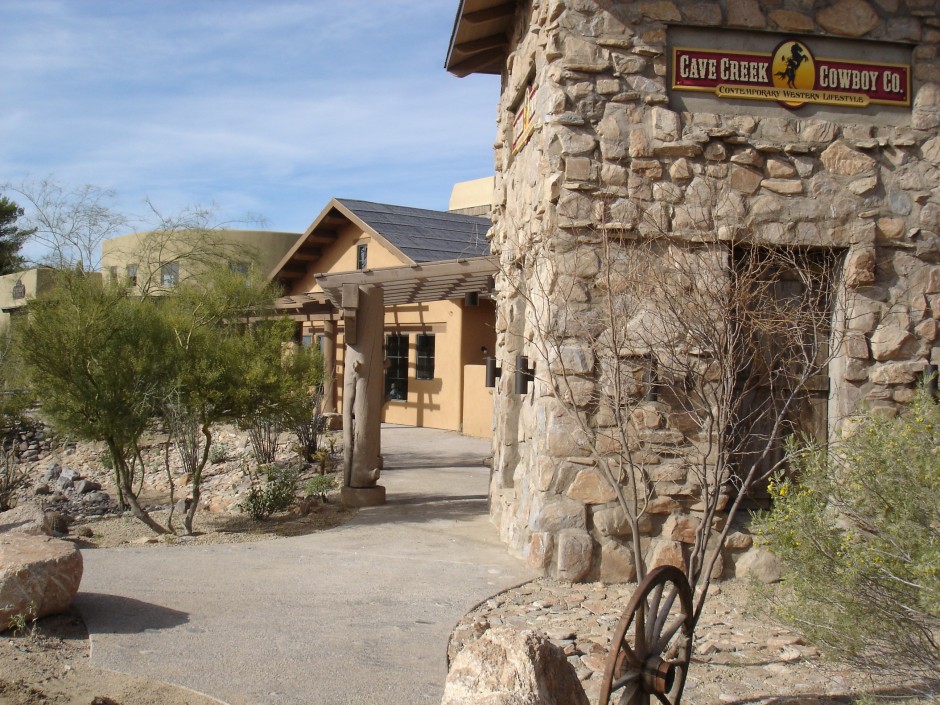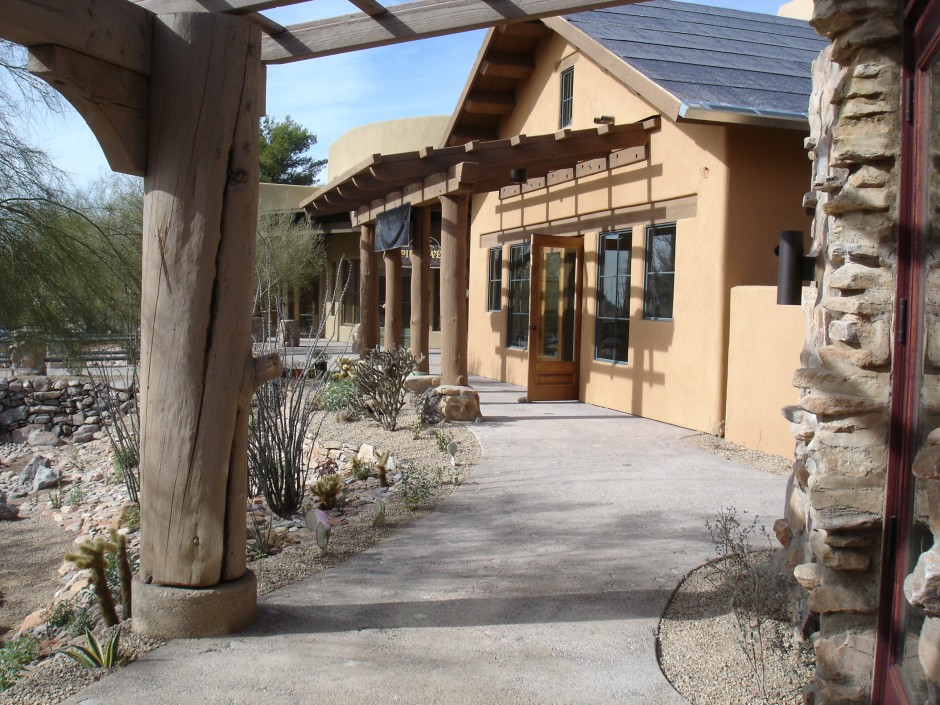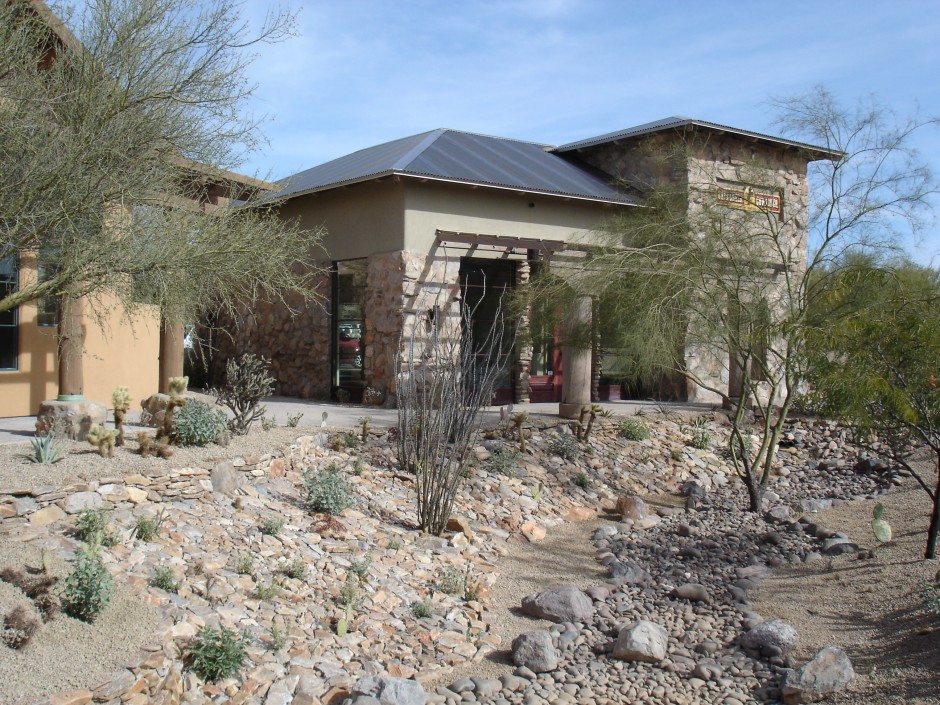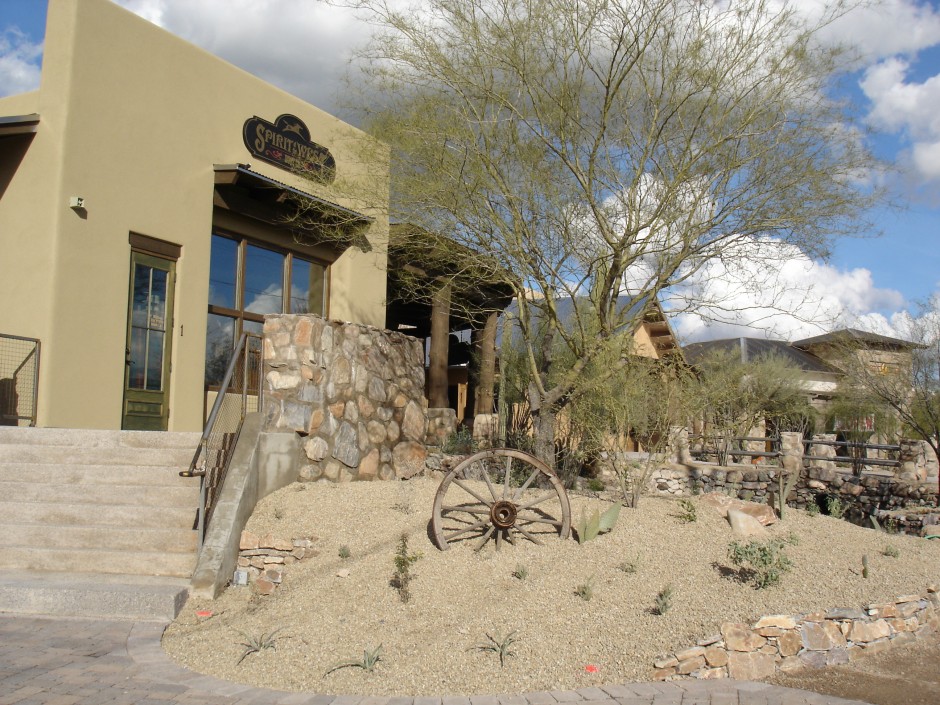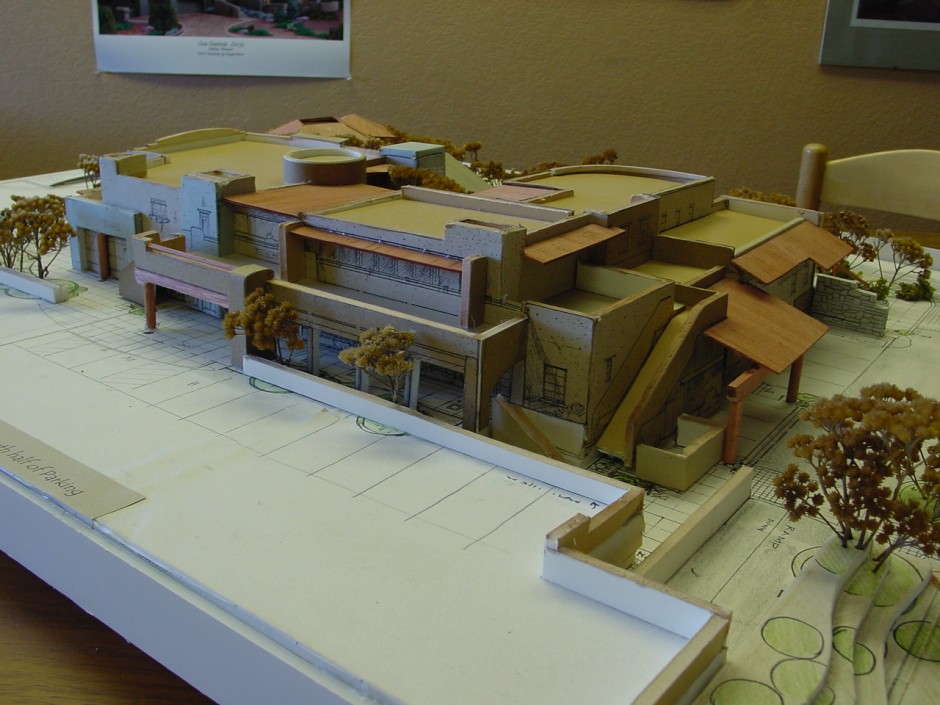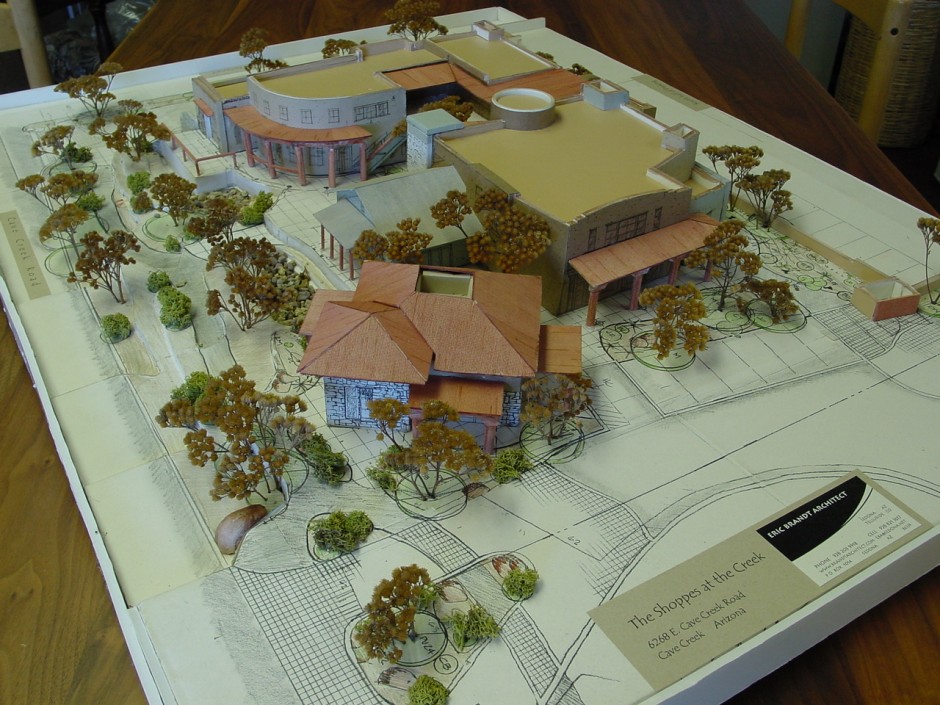The Shoppes at the Creek
Hover over image to stop animation or click any image to manually view the slideshow via overlay.
Client: Shoppes at the Creek
Location: Cave Creek, AZ
Date: completion 2005
A boutique retail center, The Shoppes at the Creek encompasses 17,000 SF within a carefully composed village of buildings. The pedestrian-oriented center is settled into the heart of the wild-west town of Cave Creek, Arizona. To reinforce the frontier image that pervades this town caught between the edge of Phoenix sprawl and the beautiful Sonoran desert wilderness, the project was conceived to evoke the town’s potential first buildings. But because there are few actual historic buildings remaining in the town, and, to not confuse the design with true history, the design does not replicate or copy historic structures.
The project’s design combines modern planning concepts and elegant rustic detailing with traditional storefronts to create a “folk art” sensibility. However simple and unassuming at first glance, the buildings carry a sophistication through historical scale, careful massing and finely crafted detailing.
In striving to create an interactive town-center, the project was designed to further enhance the pedestrian nature of the town. Parking is hidden in the rear on two levels. Pedestrian access is anticipated from all four directions with multiple pedestrian access points on each side. Even equestrian access is accommodated. All sides of the building are protected by porches, canopies and portales, creating shady spaces. These one-story projections also bring the scale of the two-story building portions down to the human scale found throughout Cave Creek. And the project successfully creates the heart of town by engaging the adjacent neighboring buildings such as the post office, a bank and a popular restaurant with a huge, oasis courtyard. The project also anticipates a pedestrian connection for the undeveloped multi-acre parcel to the rear of the parcel.
The historically scaled building elements within the Shoppes’ “village” retain their individuality and truly appear to be individual buildings – not storefronts tacked to a big box. This design approach retains the historic scale of a gathering of small buildings from all viewpoints and further enhances the pedestrian experience of old-town Cave Creek.
The center’s design imagines the potential founding buildings of territorial Cave Creek. Fronting Cave Creek Road on the right side is the outpost”, a free-standing, rustic stone structure with a hipped roof and tower. Off of the grid of town, it represents the settlement’s first structure established as a stronghold.
At the opposite end of the center’s street frontage is a simple adobe-looking commercial building the first general store.
Protected between these two establishments is a gabled structure similar in form and detailing to the one-room schoolhouses of the frontier days. The remaining Shoppes at the Creek’s spaces behind this frontage are designed to appear to have been added through time, and all possess a historic scale, even the second-level, glassy restaurant space.
Completing the street-front composition of the project is a rounded two-story structure with a curving portale that has been “added” to the “general store. This sweeping form draws one into the central courtyard. The eye follows the sweep to the counter-point of the project – the restaurant’s cylindrical entrance tower encased in rusting corrugated steel.
While the storefronts reach out to the town on all sides, overall the project’s spaces are organized around a central courtyard. At the courtyard’s second level is the restaurant that features multi-panel sliding glass doors on three sides of the dining and bar areas. With these doors open, the restaurant becomes an open-air pavilion with dining balconies that overlook both the project’s central courtyard and the surrounding Sonoran desert. The restaurant’s interior and exterior plan arrangement was carefully integrated into the overall design of the project. At this time, the Shoppes at the Creek also includes galleries, apparel boutiques, an interior design center, a day spa and office spaces.
The extensive landscape design emulates the naturally lush and rolling character of the desert foothills with specimen native plantings and arroyo-like terrain features (the “Creek ”of the Shoppes at the Creek). The two-level parking garage was designed to appear to be only surface parking. The hidden lower level of parking receives light via large window and stairwells filled with desert landscaping. The top deck of parking is further screened by landscape walls and plantings.
Finish materials reflect the desert environment. They are vibrant and rustic. The predominant materials are: stucco painted in many natural desert colors; logs and timbers both stained and left natural; rusty and galvanized steel roofs and siding; and native stone in a humble, full mortar set. The contrast of materials, textures and colors are designed to further enhance the village of buildings.
The design honors the true essence of Cave Creek. This essence is the town’s authentic relationship with both Arizona history and the living desert in its most abundant and natural state.
